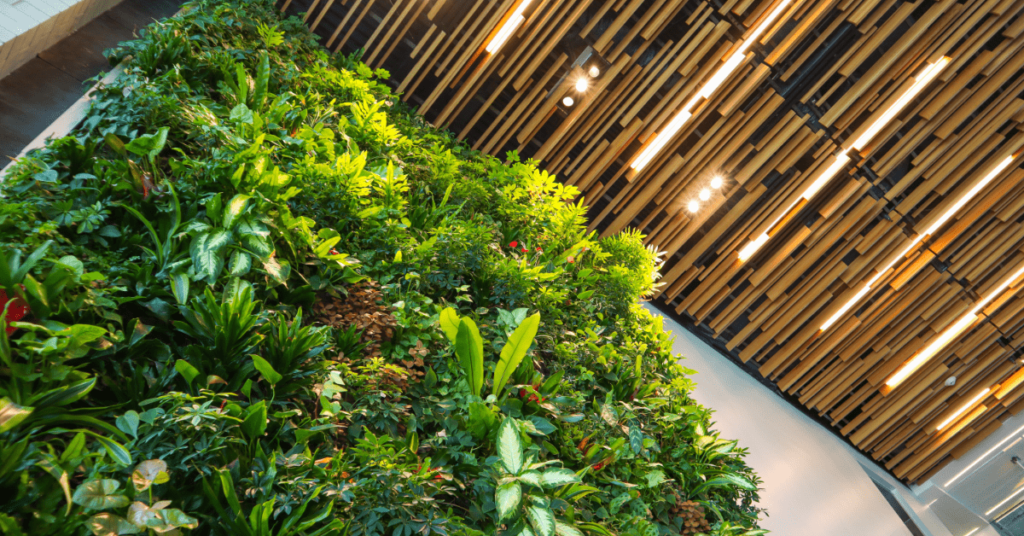You can see the design in all aspects of your life. Even this very planet and the solar system of which it is a part seem to have a design. If you want your life to be better today and in the future, your home needs a sustainable interior design. The goal of such designs is to meet your needs and the requirements of future generations. Another purpose of sustainability is eliminating the negative effects on the environment.
A sustainable interior design, therefore, can also be described as an eco-friendly interior design or eco-design. Sustainable practices used in the process of designing and decorating your home can reduce your carbon footprint. An eco-friendly interior design seeks to minimize waste, reduce the use of non-renewable materials, and create healthy surroundings.
Creating interior designs that address the current and future environmental problems is the need of the hour. So, a sustainable design is, in a way, a long-term approach to ecological protection. Here are some of the prominent features of a sustainable interior design:
1. Energy-efficiency
One of the major factors that have contributed to the current environmental crisis is energy consumption by humans. Both residential and commercial units are responsible for large amounts of greenhouse gas emissions. However, the energy efficiency of single homes and residential and commercial buildings can be improved. This can be made possible with the efforts of architects and interior designers.
Their designs can decrease the amount of energy required for lighting, air-conditioning, heating, and other purposes. Buildings can be provided with renewable and non-carbon-based energy. Interior designs can have a major influence on heating and lighting requirements. Most of the heat in a building can escape through the windows.
It is, therefore, necessary that the windows provide good insulation and are of high quality. The sun’s heat and cold air from the outside can be controlled with the help of drapes and curtains. A building’s temperature can be controlled in an energy-efficient manner with the use of window coverings, blinds, or shades. Carpets are effective thermal insulators. They can retain nearly 10% of the heat of a room.
You can also save energy by choosing the right colours for your home or office. Lighter colours, for instance, can reflect more light. Rooms that have darker walls and furnishings are the ones that need more artificial lighting. The heating and lighting systems of homes and offices can be controlled with the help of home automation systems today.
2. Reduction of waste
Interior designers hold greater power in their hands to reduce waste. This is only possible if they act with a sense of responsibility towards the sustainability of the environment. In the times that we live in, our planet’s natural resources have become even more valuable. Hence, the practice of discarding products simply because they’re out of style must be stopped.
It’s harmful for our environment to just discard artificial materials that can pollute the air and water. Such materials can also harm the flora and fauna. Thankfully, increasing awareness of the need for sustainability has generated interest in recycling, repurposing, and other such practices. Some creative ways have been devised for using old but functional objects instead of simply discarding them.
Using synthetic materials made from recycled waste is yet another practise that’s being implemented. With such methods, waste becomes raw material for creating new products. Thus, a new manufacturing and consumption cycle is being formed, which can effectively reduce or eliminate waste.
3. Durability and flexibility in design
It is important for interior designers to consider the lifespan of any material while creating sustainable designs. This can prevent the materials or products from getting discarded. Elements that are subject to a lot of wear and tear must be given much attention. One of the goals of sustainable interior designs must be to create timeless spaces.
Individuals grow and change over a period of time. In this process, they often want their surroundings to grow and change with them. Interior designers must consider such needs of people and make the spaces flexible and adaptive. They must design flexible spaces and choose quality over quantity to achieve timelessness.
Innovation can add in several options to flexible design. It can include walls that can be modified and items of furniture that are modular and adjustable. An interior design can suggest investment in elements that are sturdy, easy to clean, and durable. This can save money as such elements usually require a lot less renovation.
4. Minimizing environmental impact
When it comes to sustainability, only the products and materials with the lowest environmental impact must be chosen. Organic materials seem to be an obvious choice in recent times. It must not be forgotten that they are natural resources and must be given responsible treatment.
This is the reason why renewable materials extracted responsibly are chosen for conscious living. The evaluation of such materials and products must happen at all levels of their life cycle. This includes extraction, processing, production, transportation, all the way to their discarding after use.
5. Design of health ecosystem
The COVID-19 pandemic has brought about certain changes in the lifestyle of humans across the world. People are spending most of their time indoors to maintain social distancing. So, it is important for designers to create healthy interiors in homes. They need to consider several factors in this process, such as heating, quality of air, ventilation, lighting, and acoustics.
Some of the materials and products used in homes have high levels of toxic emissions. They are the root cause of air pollution indoors. Furniture or equipment, for instance, that are treated with harmful chemicals release dangerous toxins in the air. This is why designers must select materials responsibly.
Materials that release lower levels of volatile organic compounds and other pollutants in the air must be chosen. This would significantly improve the indoor air quality. Plants facilitate proper circulation of air and keep it fresh. They also act as natural air filters. Carpets also play a similar role to some extent.
They trap and hold dust particles, allergens, germs and other air pollutants until removed by a vacuum cleaner. Carpets also have the quality of being excellent sound insulators. They help in absorbing sound vibrations, which can be a boon to the occupants of a building.

